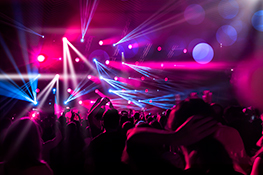Light Up Your Stage: A Guide to Creative Lighting Techniques
Understanding the Fundamentals: Color, Intensity, and Direction
Before diving into advanced techniques, mastering the basics of color, intensity, and direction is crucial. Color temperature, measured in Kelvin (K), affects the mood. Cool colors (5000K+) create a bright, energetic atmosphere, while warm colors (2700K-) evoke feelings of comfort and intimacy. Intensity, controlled by dimmer packs and fixture settings, dictates the brightness and visibility of elements on stage. Finally, the direction of light – front, back, side, top – significantly impacts the shadows and highlights, shaping the overall visual narrative. Experiment with different combinations to achieve desired effects. Consider using gels to modify the color of your lights and create unique atmospheric effects.
Sculpting with Light: Shadow and Highlight Techniques
Mastering shadow and highlight manipulation is key to creating depth and dimension on stage. Backlighting, for instance, separates the subject from the background, creating a dramatic silhouette. Side lighting introduces depth and texture, while front lighting provides even illumination, ideal for showcasing detail. Strategic use of gobos (metal templates placed in front of lights) can project patterns and shapes, adding visual interest and reinforcing the theme. Don’t underestimate the power of negative space; strategically placed darkness can be just as impactful as bright light.
Dynamic Lighting: Creating Movement and Emotion
Static lighting, while functional, lacks the dynamism needed for impactful performances. Integrating movement into your lighting design adds another layer of storytelling. Consider using moving heads, which offer precise control over pan, tilt, and beam shaping, allowing for dynamic chases and sweeping effects. Gradually changing the intensity and color of lights, a technique known as crossfading, helps create smooth transitions and emotional shifts. Explore the use of strobes for dramatic emphasis, but use them sparingly to avoid overwhelming the audience. Remember to synchronize lighting changes with the music and action on stage for a truly cohesive experience.
Special Effects: Beyond the Basics
Beyond the fundamentals, special effects can elevate your lighting design to a new level. Fog and haze machines create atmospheric depth and enhance the impact of beams. LED pixel mapping allows for incredibly intricate and customizable displays, opening doors to stunning visual effects. Laser lighting, while requiring careful handling, can add a futuristic edge or create mesmerizing patterns. Careful consideration of the specific production requirements is essential when incorporating special effects, ensuring they complement, rather than detract from, the overall aesthetic.
Planning and Execution: A Step-by-Step Guide
Successful lighting design requires careful planning and execution. Start by analyzing the script or performance, identifying key moments and emotional shifts. Develop a lighting plot, a detailed diagram illustrating the position and function of each fixture. During rehearsals, collaborate closely with the director and performers, fine-tuning the lighting to complement the overall vision. Remember to account for safety regulations and ensure all equipment is properly installed and operated. Thorough testing before the final performance is crucial to avoid any technical glitches.
Conclusion: The Power of Illumination
Lighting is more than just illumination; it’s a powerful storytelling tool capable of enhancing emotions, creating atmosphere, and shaping the audience’s experience. By mastering the techniques discussed in this guide and constantly experimenting with new approaches, you can transform your stage from a simple platform to a captivating visual spectacle. Remember, the key is to let your creativity shine as bright as your lights.


 Auditorium Construction Services
Auditorium Construction Services 